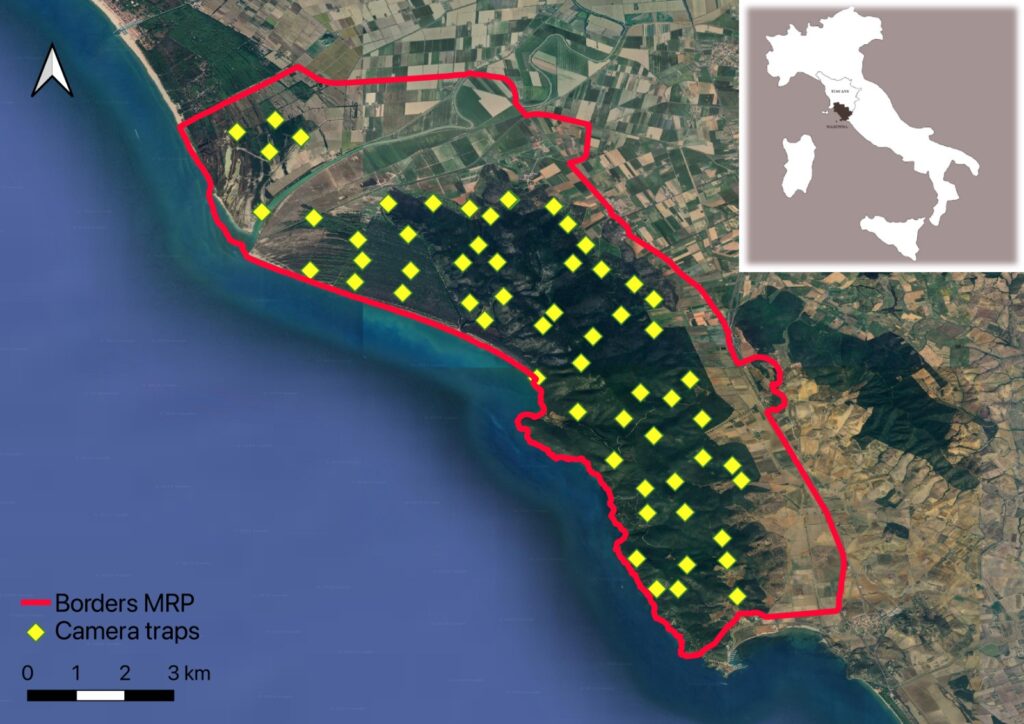
Study area:
My study area is a 90 km² protected coastal area in central Italy, the Maremma Regional Park. Long term monitoring of the different species in the park has been going on for many years, with the most recent setup being composed of 60 camera traps (represented by yellow diamonds on the map).
This park present a high number of wolves, with 3 packs assessed today, and a high density of wild ungulates (fallow deer, roe deer and wild boar).
Camera trap:
The use of camera traps has increased in research during the last years, and has been shown to be effective regarding the monitoring of species hard to encounter and observe in the wild, such as the wild boar or the wolf.
In this study, we used them to check the occurence of groups, the number of individuals within those groups, the activity, and all camera were linked to environmental parameters such as shrub cover or canopy cover, and placed in different habitat types.
Food habits:
The first step of the study was to show that the wild boar became the main prey of the wolf, highlighting the need for an anti predatory behavioural change. To demonstrate this, wolf scats were collected every months following itineraries to check on camera traps. In the scats item useful to identify preys are kept and a prey proportion in the diet is estimated.
Statistics:
Linear models of parameters such as wild boar group size, wild boar maximum group size, wild boar group size excluding the solitary individuals’ detections and the percentages of solitary detections were put against the progressive years since the wolf settled in the area.
Correlations of possible confoundings factors (i.e. food availability, food dispersion, population parameters and culling) compared to years and to the previously mentioned parameters were done to rule out these possibilities to explain a possible group size increase.
Two genelarised linear mixed models were done: a binomial test to compare the occurence of groups in the population versus solitary detections, to determine if the occurence of groups was higher depending on different factors, and a second to check for the wild boar group size, excluding solitary detections, to check if the groups were larger depending on different factors.
We expected more groups and larger ones with a higher wolf activity, and in habitat considered as risky (open habitat). We also expected the occurence and size of groups to go up with years, but down with the progressive date (meaning smaller groups in the end than in the beginning of the season).